Saturday, November 30, 2013
Advent Devotional Ideas
Advent Week 4 & Christmas
On this Sunday before Christmas, add the light of the purple Wise Men Candle to that of the other three candles. The readings focus on the wise men, wisdom, and the One who is all-wise.
Friday, November 29, 2013
Advent Week 3
Thursday, November 28, 2013
Advent Week 2
Wednesday, November 27, 2013
Advent Week 1
Tuesday, November 26, 2013
Preparing for Advent
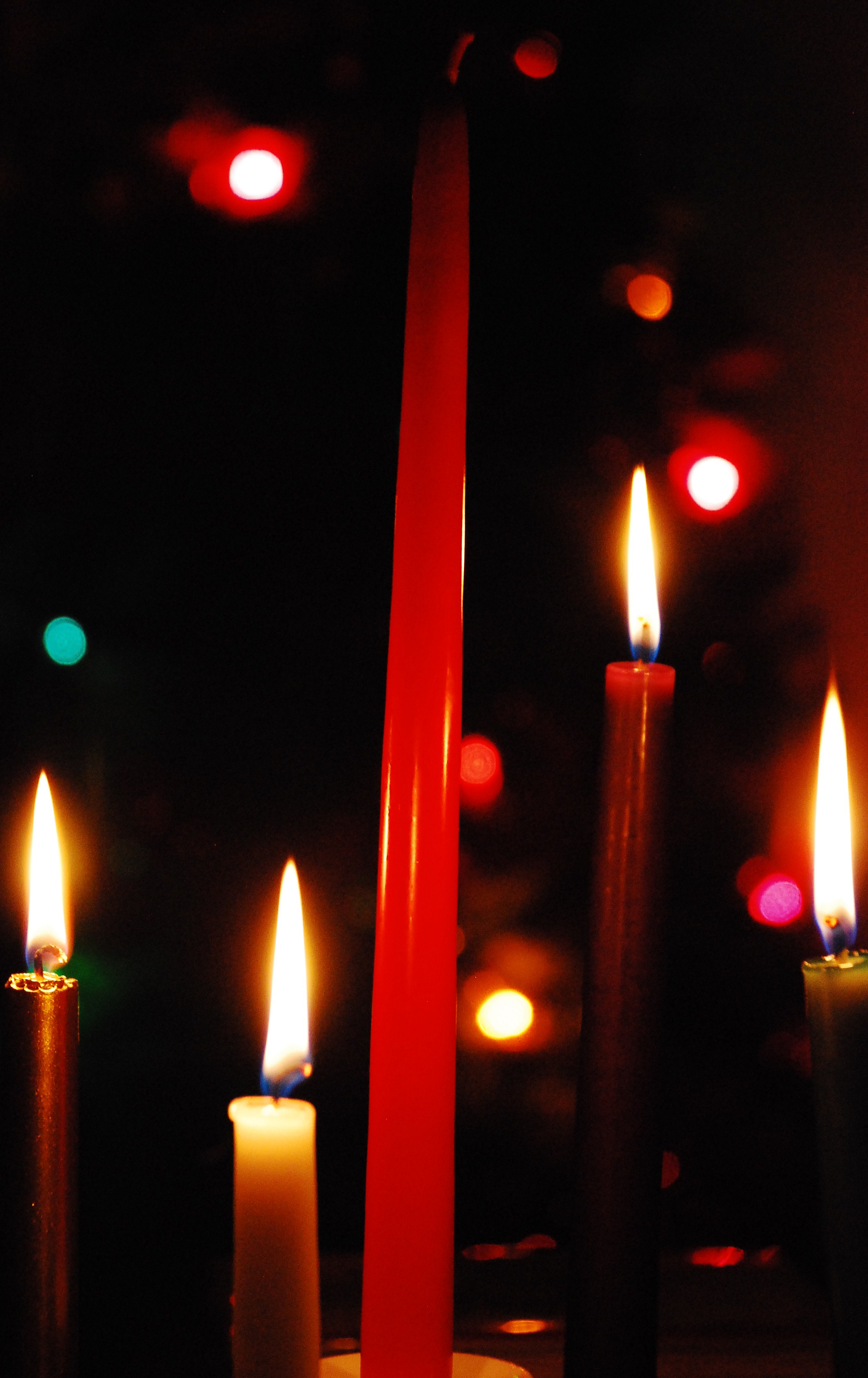 |
| Advent Wreath Glow Photo by Carol Weaver. Please ask permission before copying |
Advent candles are often on sale over the Thanksgiving holiday. So now is the time to go and get your candles for your wreath!
Advent (from the Latin word adventus, which means "arrival" or "coming") is the first season of the liturgical year. It begins four Sundays before Christmas, the Sunday falling on or nearest to 30 November, and ends on Christmas Eve. Traditionally observed as a "fast", it focuses on preparation for the coming of Christ, not only the coming of the Christ-child at Christmas, but also, in the first weeks, on the eschatological final coming of Christ, making Advent "a period for devout and joyful expectation".[8] This season is often marked by the Advent Wreath, a garland of evergreens with four candles. Although the main symbolism of the advent wreath is simply marking the progression of time, many churches attach themes to each candle, most often 'hope', 'faith', 'joy', and 'love.' (http://en.wikipedia.org/wiki/Advent)
On Sunday evenings, we gather around our Advent Wreath and sing "Come Thou Long Expected Jesus" and do the Advent Ceremony in Martha Zimmerman's excellent book, Celebrating the Christian Year. We do different colors of candles than the ones Martha suggests. Do what you feel comfortable with!
This book is a goldmine with background, history, Scriptures, equipment necessary, and recipes for not only Advent but for celebrations all year long!
For younger kids, the Advent Reading books by Arnold Ytreeide were a big hit with our kids. There is a cliffhanger every night!
(They were so hard to find back when my kids were little that I sent the next in the series that we were not using to my girlfriend in Colorado because they were selling for over $100, and her kids were wanting the next installment! There are now many copies.)
I guarantee your family will be on the edge of their seat every night begging for more!
Here is the order of the Advent series:
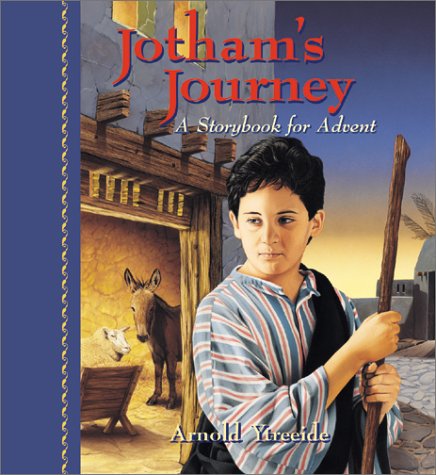
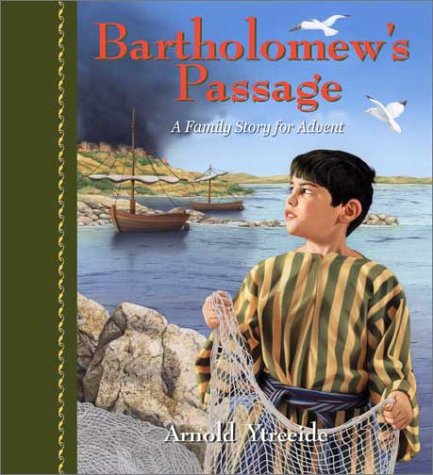

Monday, November 25, 2013
Jesse Tree December Devotional
- CREATION: Genesis 1 & 2
- THE FALL: Genesis 3
- NOAH AND THE ARK: Genesis 6:5-8:22
- THE CALL OF ABRAHAM: Genesis 12:1-9, 15:1-6
- SACRIFICE OF ISAAC: Genesis 22:1-19
- JACOB'S LADDER: Genesis 28:10-17
- JOSEPH'S COAT: Genesis 37:1-28; 50:15-21
- MOSES AND THE 10 COMMANDMENTS: Exodus 20:1-17
- CONQUEST OF CANAAN: Numbers 13 & 14:6-9
- . RUTH AND BOAZ: Ruth 1-4
- KING DAVID: 1 Samuel 16:1-13
- . JOSIAH FINDS THE LAW: 2 Kings 22:1-13; 23:1-3
- THE SHOOT FROM THE STUMP OF JESSE: Isaiah 11:1-5
- THE LION AND THE LAMB: Isaiah 11:6-9
- THE PRINCE OF PEACE: Isaiah 9:2-7
- FEEDS LIKE A SHEPHERD: Isaiah 40:9-11
- THE SUFFERING SERVANT: Isaiah 53
- THE NEW COVENANT: Jeremiah 31:31-34
- BETHLEHEM: Micah 5:2-4
- THE EXILE: Daniel 3
- RETURN TO THE LAND: Ezra 1:1-8
- JOHN THE BAPTIST: Matthew 3:1-12
- ANNA AND SIMEON: Luke 2:25-38
- MARY: Luke 1:26-56
- THE BIRTH OF CHRIST: Luke 2:1-20
THE BIRTH OF CHRIST: Luke 2:1-20
LINK: Luke 2:1-20
Symbol: Jesus
BBC BACKGROUND from Luke 2
Jesus is born in Bethlehem (2:1-7)
Caesar Augustus was the ruler of the Roman Empire between 27 B.C. to A.D. 14. God used a secular ruler to fulfill the prophecy of Micah 5:2. In the Roman Empire the census was taken every fourteen years for military and tax purposes. Joseph's ancestral home was Bethlehem. Joseph was a descendant of David (1:27) who was born in Bethlehem. So they needed to go from Nazareth to Bethlehem (which means "house of bread"). Usually, it was just the Jewish male, but he traveled with Mary because she was so near to delivering her baby. Tradition tells us that Jesus was born in a cave near the inn. He was wrapped in strips of cloth which was a practice at that time for keeping limbs straight and protected.
Shepherds visit Jesus (2:8-20)
How wonderful that angels would appear to poor, outcast shepherds. Their work made them ceremonially unclean. God calls the poor and lowly to Himself (Luke 1:51-53; 1 Corinthians 1:26-29). This baby was also the Good Shepherd (John 10) and Lamb of God who would take away the sins of the world (John 1:29).
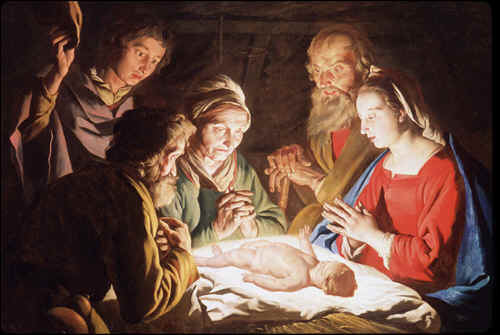 |
The Adoration of the Shepherds by Matthias Stom (fl. 1615–1649) |
Then a multitude of angels came praising God and announcing PEACE. Even though the Roman Peace ("Pax Romana") had been in effect since 27 B.C., there was really no peace. The Stoic philosopher, Epictetus, (A.D. 55 - A.D. 135) once said:
While the emperor may give peace from war on land and sea, he is unable to give peace from passion, grief, and envy. He cannot give peace of heart for which man yearns more than even for outward peace. (The Bible Exposition Commentary: Volume 1, p. 176)The Hebrew word for peace, Shalom, which is translated as eirḗnē in the Septuagint (Greek translation of the Old Testament), "has to denote, not merely rest, but a state of well-being or wholeness [emphasis mine], so that one can even be said to die in peace (as distinct from suffering violence). Nor is this well-being restricted to material welfare" (Theological Dictionary of the New Testament, p. 208).
Let this all wash over you and soak in deeply. It is so easy to just gloss over this because you hear this so many times during Christmas. Jesus is our Peace! It is amazing!
REFLECTION/APPLICATION/PRAYER
Recitative (Soprano)
There were shepherds abiding in the field, keeping watch over their flocks by night. (Luke 2:8)
And lo, the angel of the Lord came upon them, and the glory of the Lord shone round about them: and they were sore afraid. (Luke 2:9)
Recitative (Soprano)
And the angel said unto them, Fear not; for, behold, I bring you good tidings of great joy, which shall be to all people. For unto you is born this day in the city of David a Saviour, which is Christ the Lord. (Luke 2:10, 11)
(More sparkling in the sky with the music!)
Recitative (Soprano)
And suddenly there was with the angel a multitude of the heavenly host praising God, and saying, (Luke 2:13)
Chorus
Glory to God in the highest, and on earth peace, good will toward men. (Luke 2:14)
(All the angels singing, and now I am crying. Such a Messiah nerd!)
Sunday, November 24, 2013
MARY: Luke 1:26-56
LINK: Luke 1:26-56
Song: "Silent Night"
BBC BACKGROUND from Luke 1
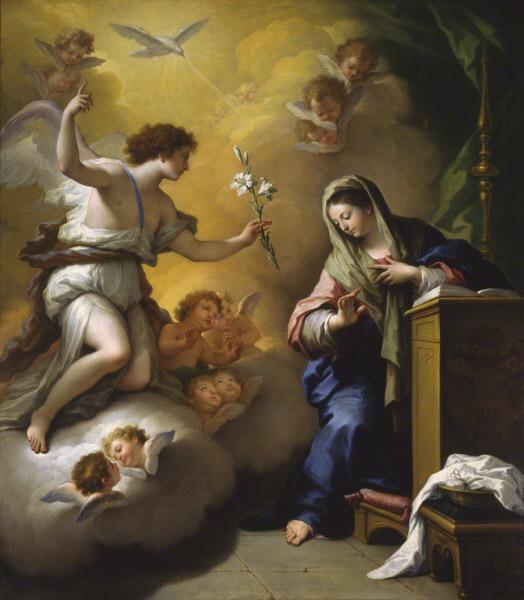 |
"The Annunciation" By Paolo de Matteis (Saint Louis Art Museum official site)
[Public domain], via Wikimedia Commons
|
Note that Gabriel said, "Do not be afraid" to both Zechariah and Mary. He also told her of her Son's special characteristics, as he did to Zechariah. He was to be the "Son of the Most High":
The Septuagint often used the term “Most High” (hypsistou) to translate the Hebrew ‘elyôn (cf. v. 76). Mary could not have missed the significance of that terminology. The fact that her Baby was to be called the “Son of the Most High” pointed to His equality with Yahweh. In Semitic thought a son was a “carbon copy” of his father, and the phrase “son of” was often used to refer to one who possessed his “father’s” qualities (e.g., the Heb. trans. “son of wickedness” in Ps. 89:22 [kjv] means a wicked person). (The Bible knowledge commentary: Volume 2 p. 205)God promised David that his kingdom would last forever (2 Samuel 7:16). Jesus fulfilled this promise.
The name Jesus is also very significant. It is the Greek form of the Hebrew name, Joshua, which means "the Lord saves." Joshua led the people into the promised land (Joshua 1:1, 2), and Jesus would lead His people to salvation.
Unlike Zechariah, Mary was not punished for her questioning. She asked how Jesus would be born to her if she was a virgin, Gabriel must have known the heart behind her question.
Mary's response is so beautiful: “Behold, the bondslave of the Lord; may it be done to me according to your word” (Luke 1:38). I wish we could all have that response to God's will!
Some commentators believe that Luke must have interviewed Mary personally because this account is so personal, reflecting her deep inward feelings.
 |
| The Birth of John the Baptist by Jacopo Pontormo [Public domain], via Wikimedia Commons |
Mary visits Elizabeth: Luke 1:39-56
Shortly after Gabriel visited Mary, she went to spend three months with her pregnant relative Elizabeth. What joy and female bonding!
Luke frequently used the word "joy" in the two books he wrote (Luke and Acts). He often links this word with salvation. We have seen him use it in describing John the Baptist (1:14), and it is in full view in this section! John leaped for joy in Elizabeth's womb when Mary came carrying Jesus. Elizabeth responded in joy when she said that Mary was carrying the mother of her Lord. The term "Lord" (kyrios) was often used to describe Jesus in the book of Luke because "Christ" ("Messiah") would have not meant as much to his target audience, the Greeks, because they did not know all the prophecy leading up to His coming.
Lastly, Mary responded in joy at carrying Jesus by singing a hymn of praise and quoting many Old Testament Scriptures (Psalms and Hannah's song in 1 Samuel 2:1-10). This song is often called "The Magnificat" because the opening words, "My soul doth magnify the Lord," is Magnificat anima mea Dominum in Latin. Many beautiful pieces of music have been written to this music by composers like Vivaldi and Bach (I think I sang the Vivaldi version my freshman year in college).
REFLECTION
I've never had an angel visit me, but this story brings back fond memories of a day during the Christmas season of 1991 when God told me that the baby due in January would be a boy. Later that day, while driving to a performance of The Nutcracker, I told George about what God told me, and to my surprise, he said, "Carol, God told me the same thing this morning!" It was fun to tell our son that story on the way to see The Nutcracker again twenty years later!
I think that this is confirmation that God does speak to us today, and we don't have to wait four hundred years for God to break through the silence.
APPLICATION
Here are some possible suggestions for application:
- Spend some time listening to God. That means shutting out the busyness of your life to really find some solitude and silence.
- Worshiping God as You pray through Mary's Magnificat!
- Meditate on Jesus being redemption, salvation, forgiveness, and light for you.
- Try this Lectio Divina of Mary visiting Elizabeth or the Angel Visiting Mary.
Lord, I cannot study this and not believe that You are the LIGHT OF THE WORLD who came into my dark life. Everything fits together so perfectly. Thank You for Your Word that shows us all of this. Amen.
Saturday, November 23, 2013
ANNA AND SIMEON: Luke 2:25-38
Song: "Joy to the World"
BBC BACKGROUND from Luke 2
 |
| Hans Holbein the Elder [Public domain], via Wikimedia Commons |
1) Circumcision and naming on the eighth day (Leviticus 12:3, see the Genesis 17 post to learn more about circumcision).2) Redemption of the firstborn - 33 days after circumcision, they were to present their firstborn male to God (Exodus 13:2,11-16; Numbers 18:15,16). The ceremony included buying back or "redeeming" from God through an offering.2) Purification of mother - When the baby was 40 days old (80 for daughters), Mary was to make a burnt and sin offering to the priest of the temple since birth caused a woman to be ceremonially unclean (Leviticus 12). After sacrifice, the priest would declare her clean. Joseph and Mary's offering of a dove instead of a lamb for the sin offering indicates that they were poor (2 Corinthians 8:9).
PRAYER
Lord, make us anticipators and look to You coming again! Amen.
Friday, November 22, 2013
JOHN THE BAPTIST: Matthew 3:1-12
Specific to the Matthew account: Matthew tells the story of the Messiah-King. So, he skips from Jesus' infancy to the introduction of Jesus by John the Baptist who was Jesus' relative.
The rest of this background will include information from all three parallel accounts.
It is the 15th year of Tiberius Caesar, A.D. 29. Tiberius ruled over the Roman Empire from A.D. 14 to A.D. 37 and Pilate was the governor of Judea from A.D. 26 to A.D. 36. The reigning Jew over Galilee and Tiberius is Herod Antipas who we have already mentioned in a previous post. His brother, Philip, ruled east of the Jordan from 4 BC to A.D. 34. Annas was the high priest from A.D. 6 to A.D. 15. Caiaphas was his son-in-law and the Romans would replace him as high priest from A.D. 18 to A.D. 36 even though the Jews continued to recognize Annas.
John has been growing, becoming strong in spirit, and living in the desert until his public appearance in Israel (Luke 1:80). This is that public appearance. As a descendant from the priestly line of Aaron, John could have been a priest, but God had for him to be His messenger (Malachi 3:1) preaching a very special message in the Judean desert and the country around the Jordan River. His message was direct and to the point:
"Repent for the kingdom of heaven is at hand."
We know from our reading of the Old Testament that the concept of a coming kingdom with a reigning king is huge. The idea of repentance before entrance into that kingdom was a new concept for the Jews. They thought that entrance was automatic for them. John said that they needed to "repent." This Greek word metanoéō comes from the base word noéō which means to "perceive, think, know." Repent means to change your opinion, feelings, or purpose from what you thought you always knew! If what you thought you always knew was wrong the word takes on the sense "to regret" (The Theological Dictionary of the New Testament p. 636). They thought they knew the way into heaven, but John had come to tell them about the real way, and it came via a man who would baptize with the Holy Spirit and fire.
John the Baptist exhorts his audience to bear fruit in keeping with righteousness. Just being baptized and Abraham's descendants would not give them an "in" with God! The Luke account goes into more detail about what would give evidence of genuine repentance: generosity, honesty, and contentment. All three are tied to money and material possessions. It is interesting to note that the Luke account is the only one that proclaims that "all mankind" (not just the Jews) will see God's salvation (Luke 3:6). This is probably because Luke's audience was non-Jewish.
REFLECTION/APPLICATION
John has been growing, becoming strong in spirit, and living in the desert until his public appearance in Israel (Luke 1:80). This is that public appearance. As a descendant from the priestly line of Aaron, John could have been a priest, but God had for him to be His messenger (Malachi 3:1) preaching a very special message in the Judean desert and the country around the Jordan River. His message was direct and to the point:











